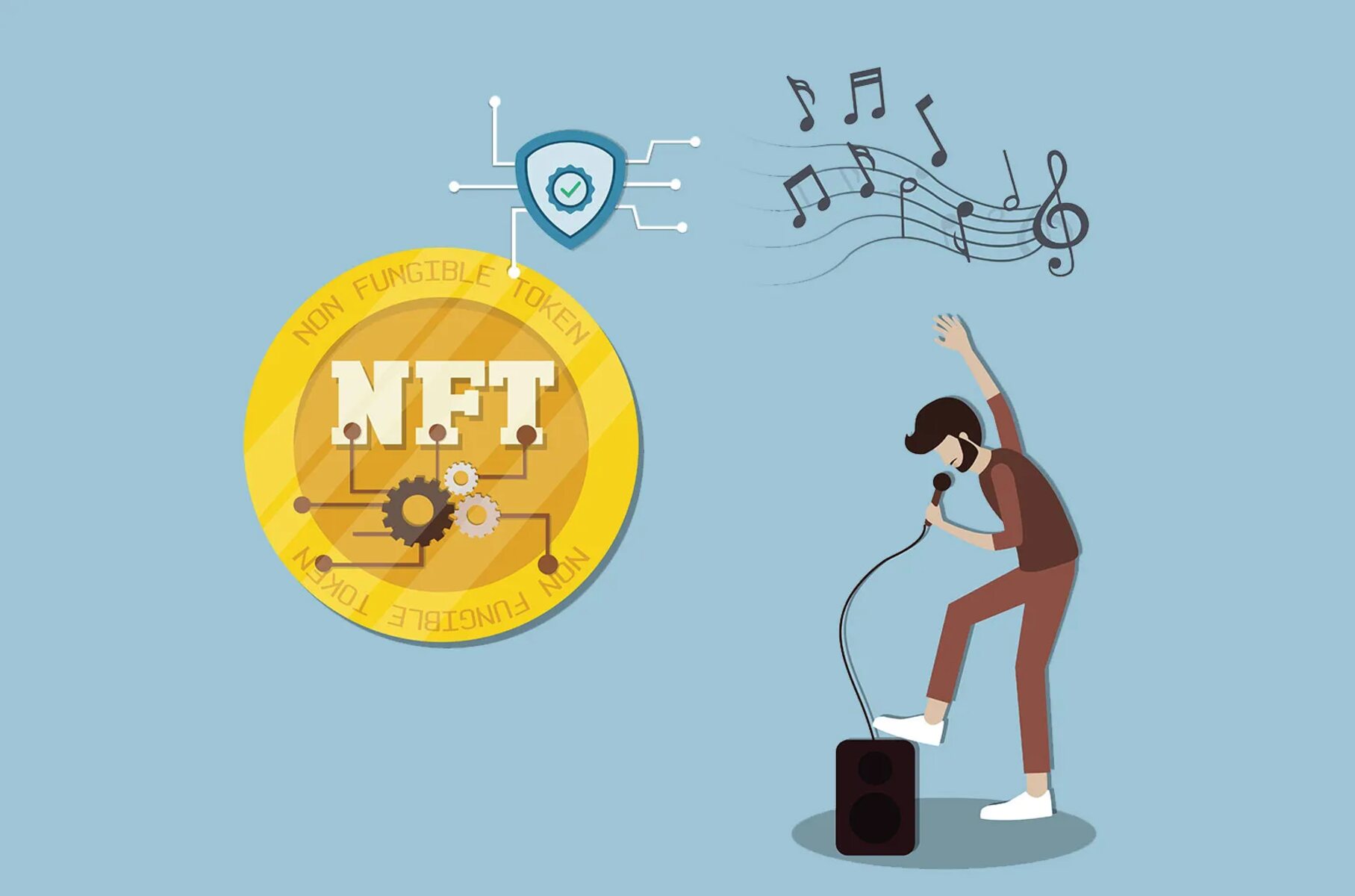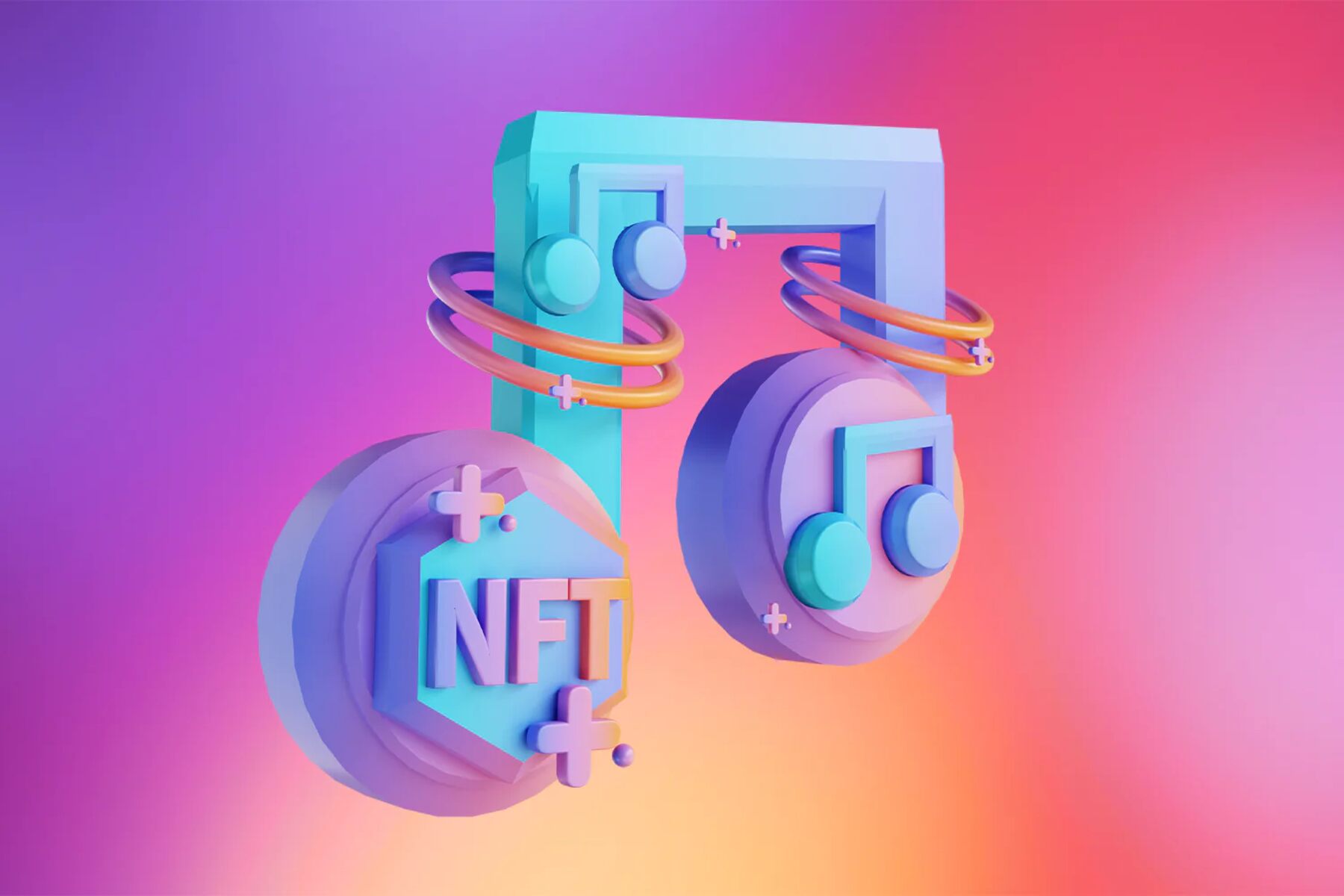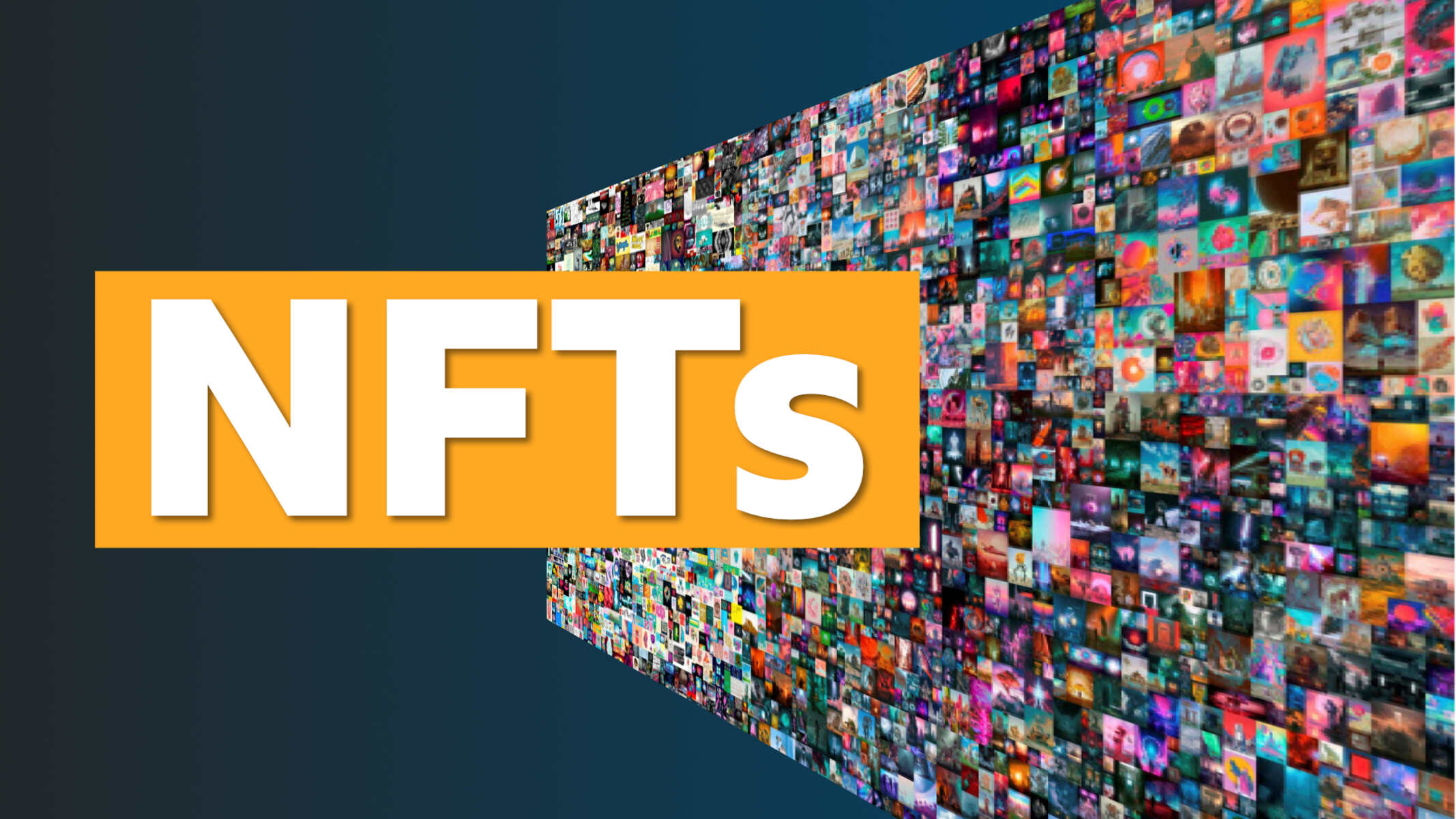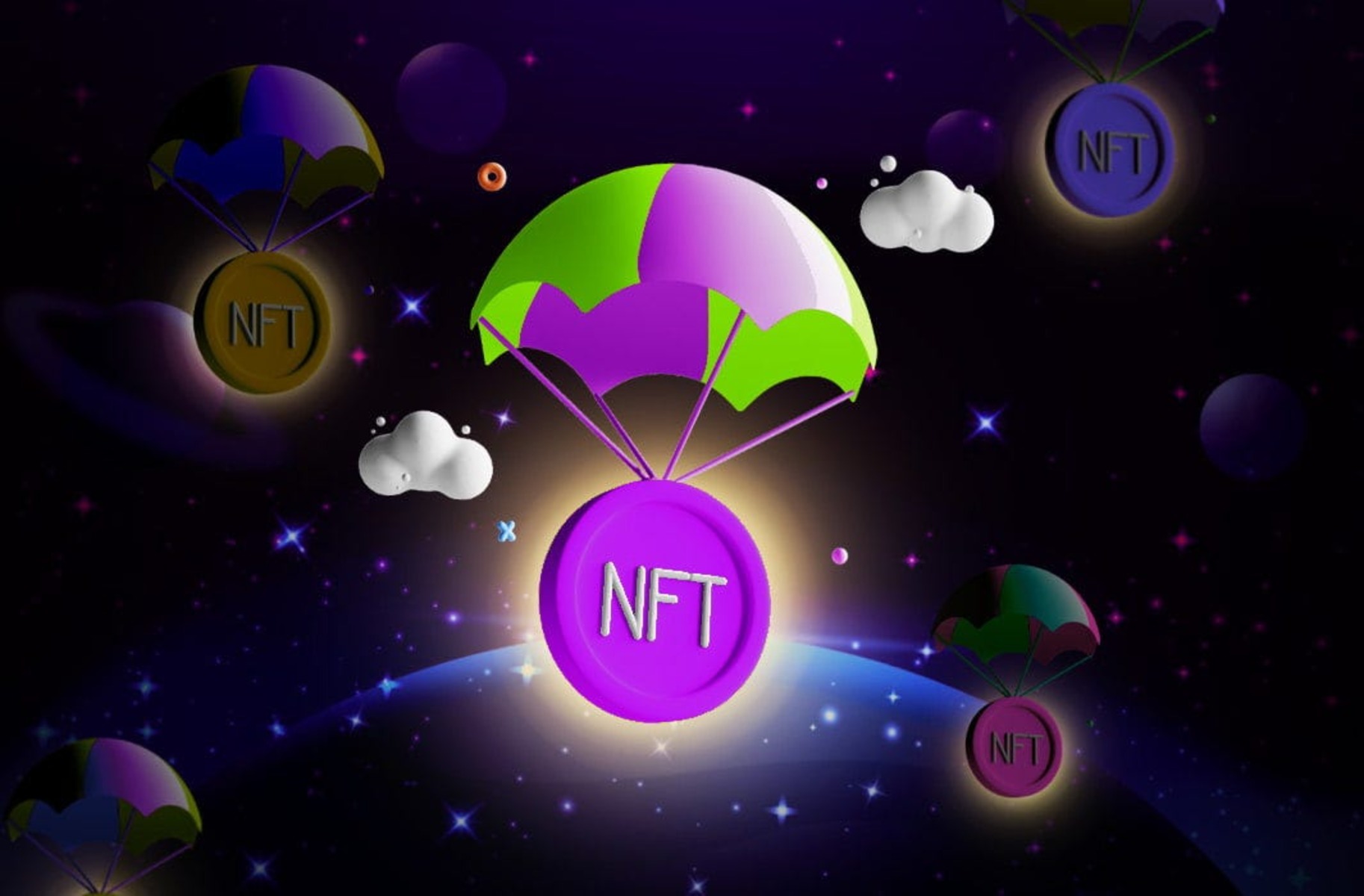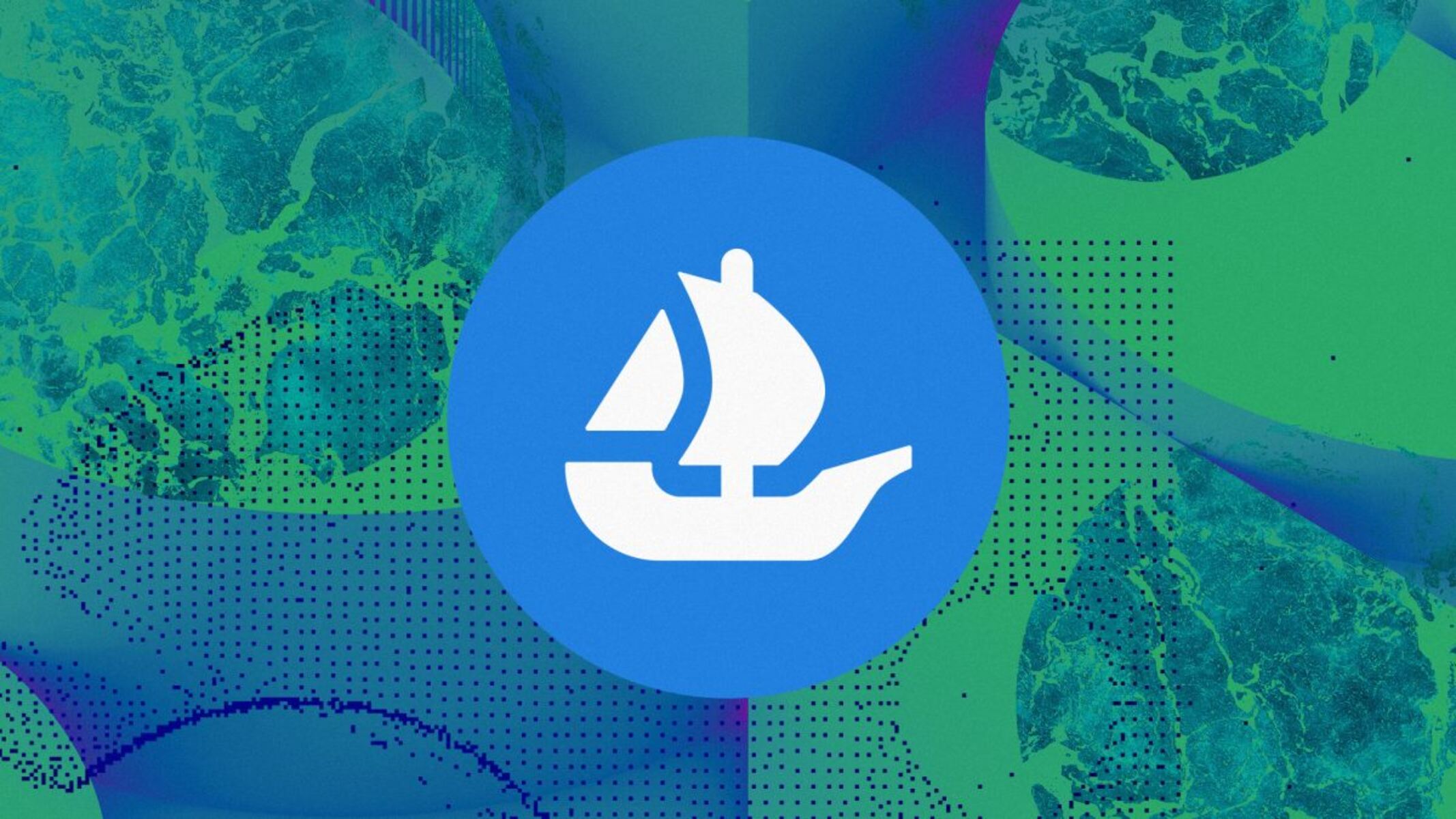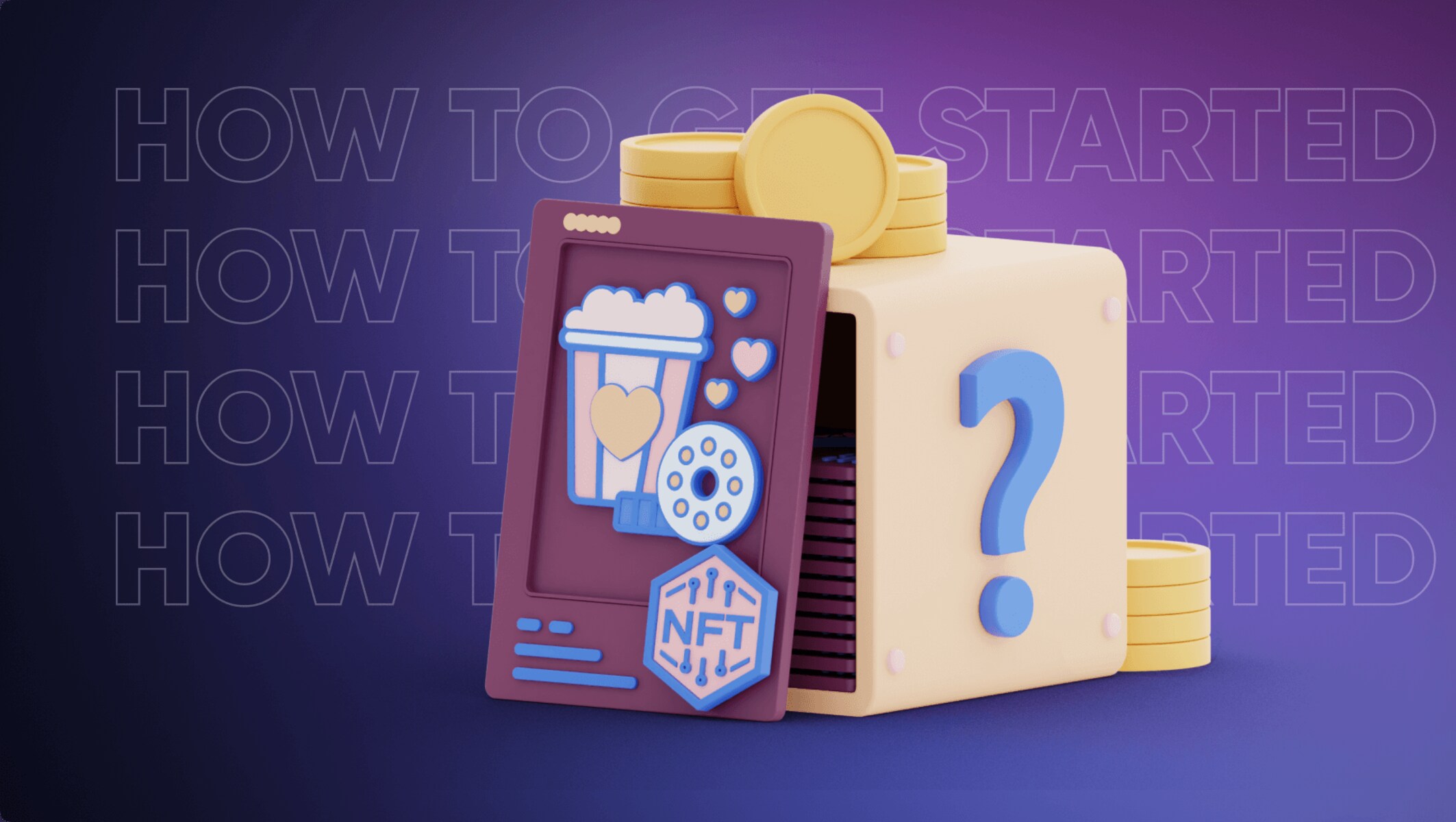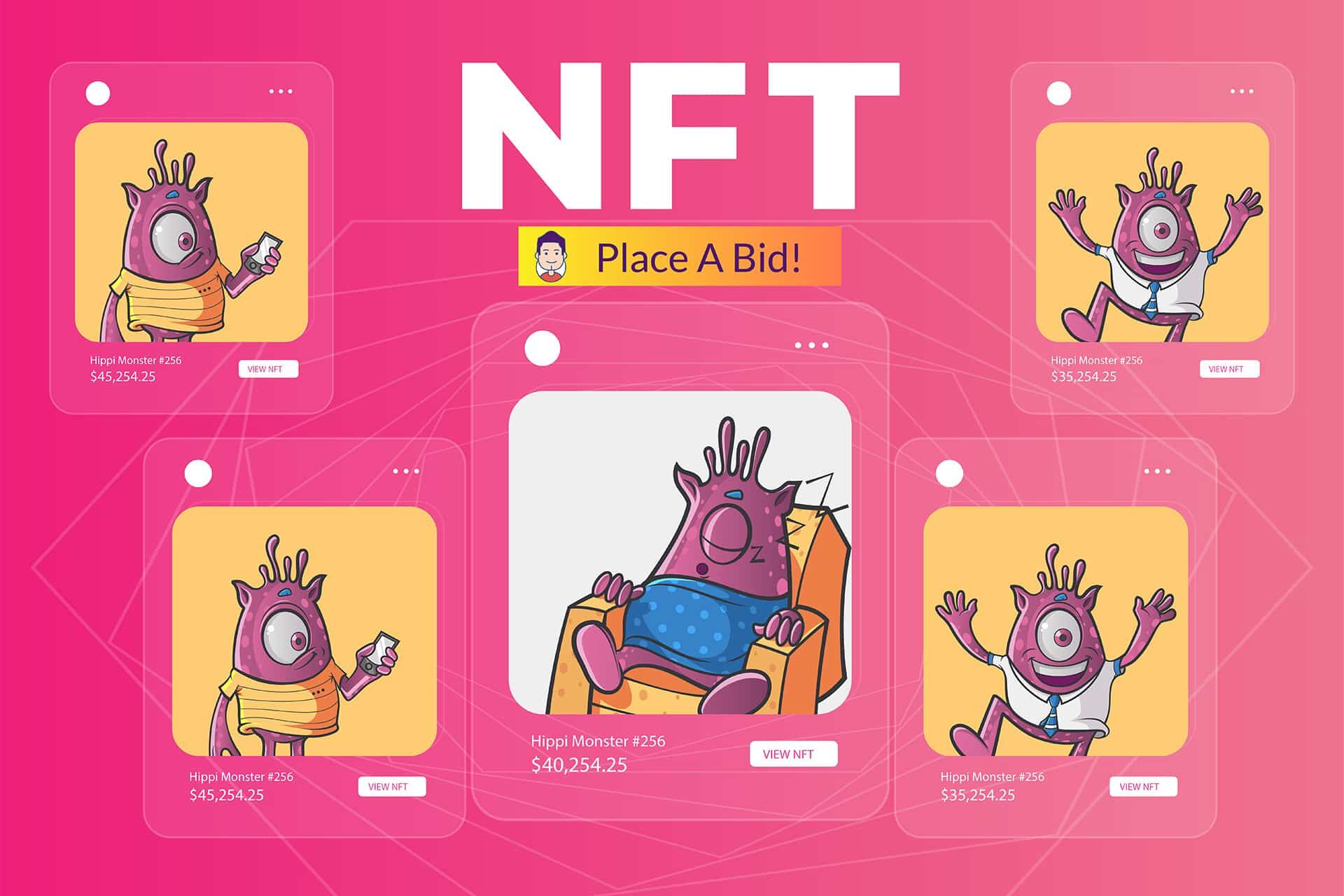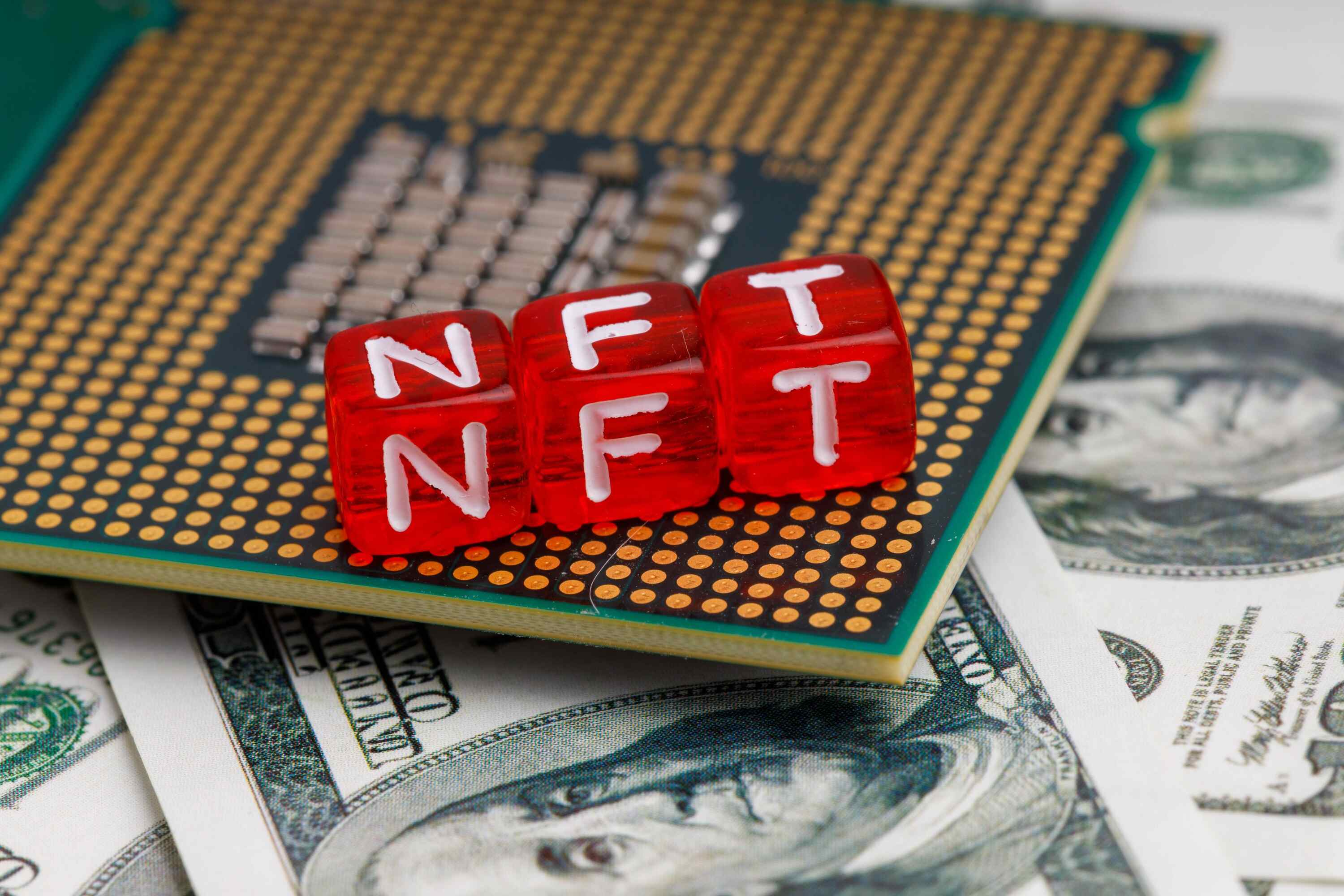Introduction
Welcome to the exciting world of NFTs and the music industry’s latest revolution! With the rise of blockchain technology, musicians now have an incredible opportunity to monetize their art in a whole new way. Non-Fungible Tokens, or NFTs, have taken the digital world by storm, enabling artists to sell unique, verifiable ownership rights to their digital assets.
But what exactly is an NFT? In simple terms, it is a digital token that represents ownership of a specific item or piece of content. Unlike cryptocurrencies such as Bitcoin or Ethereum, which are fungible and can be exchanged on a one-to-one basis, NFTs are indivisible and unique. Each NFT has a distinct value and cannot be exchanged on a like-for-like basis. This uniqueness is what makes NFTs so appealing to artists and collectors alike.
The music industry, known for its constant innovation, couldn’t resist the allure of NFTs. Musicians now have a way to directly connect with their audience, bypassing traditional intermediaries, and retain more control over their creations. NFTs provide a platform for artists to sell exclusive rights to their music, merchandise, concert tickets, and even virtual experiences.
In this guide, we will explore the process of creating and selling music as an NFT. We will take you through the essential steps involved, from choosing your music to marketing your NFT and collecting payments. By the end, you’ll have a solid understanding of how NFTs can revolutionize your music career and open up new realms of possibilities.
If you’re a musician eager to harness the power of blockchain technology and explore the world of NFTs, let’s dive into the exciting journey of making music as an NFT!
What is an NFT?
In the realm of digital assets, Non-Fungible Tokens (NFTs) have emerged as a groundbreaking concept. Unlike fungible tokens like cryptocurrencies, NFTs represent unique items or pieces of content on the blockchain, making them one-of-a-kind and indivisible.
An NFT is essentially a digital certificate of ownership that verifies the authenticity, provenance, and scarcity of a particular asset. This asset can take various forms, such as artwork, video clips, tweets, virtual real estate, and of course, music.
One of the key distinguishing features of NFTs is their ability to be easily verified and traced back to the original creator. This transparency is made possible by the decentralized nature of blockchain technology, which records every transaction and ownership change securely and immutably.
What sets NFTs apart from other forms of digital assets is the concept of scarcity. NFTs can be produced in limited quantities, allowing creators to maintain the unique value and exclusivity of their work. This scarcity is what makes NFTs highly prized by collectors and enthusiasts.
Additionally, NFTs can also incorporate smart contracts, which are self-executing agreements embedded in the blockchain. Smart contracts enable artists to define royalty fees, automatic payouts, and conditions for secondary market sales. These features empower creators to earn ongoing royalties every time their NFT is resold, providing a new and improved revenue stream in the digital age.
It’s important to note that owning an NFT does not necessarily mean owning the copyright or intellectual property rights to the underlying asset. Instead, it signifies ownership of a unique token associated with the asset, allowing collectors to prove that they possess the original version.
In the realm of music, NFTs have the potential to transform the way artists sell and distribute their work. Musicians can tokenize albums, singles, concert tickets, exclusive merchandise, and even virtual experiences. By minting music as NFTs, artists can establish a direct connection with their audience, provide a new level of scarcity to their creations, and redefine the value of digital art in the music industry.
How NFTs are revolutionizing the music industry
NFTs are ushering in a wave of transformation in the music industry, providing new opportunities for artists to monetize their work and establish a direct connection with their fans. Here are some ways in which NFTs are revolutionizing the music industry:
- New Revenue Streams: Traditionally, musicians have relied on revenue from album sales, concerts, and streaming platforms. NFTs now offer an additional avenue for artists to generate income by selling exclusive rights to their music, limited edition merchandise, and even virtual experiences.
- Ownership and Authenticity: NFTs enable musicians to prove the ownership and authenticity of their work. This creates a verifiable digital trail of provenance, giving fans confidence that they are purchasing genuine and unique music experiences.
- Direct Interaction with Fans: With NFTs, musicians can establish direct contact with their fans and build closer relationships. Artists can offer personalized experiences, such as virtual meet-ups, backstage passes, or even the chance to collaborate on a track, creating a more intimate connection between artists and their supporters.
- Enhanced Fan Engagement: NFTs provide a platform for fans to engage with their favorite artists in new and exciting ways. Fans can collect rare and limited-edition music NFTs, participate in auctions and bidding wars, and even trade these digital assets on secondary marketplaces, creating a vibrant ecosystem around the artist’s work.
- Residual Royalties: Thanks to the integration of smart contracts, artists can earn residual royalties every time their NFT is bought or sold in the secondary market. This ensures that artists continue to benefit from the success and increasing value of their work, even after the initial sale.
- Democratization of the Music Industry: NFTs have the potential to level the playing field in the music industry by eliminating the need for intermediaries. Artists can directly connect with their audience, retain more control over their creative process, and receive a fairer share of the revenue generated from their work.
The rise of NFTs in the music industry is challenging the traditional business models and opening up a world of new possibilities for artists. This innovative technology has proven to be a powerful tool for musicians to showcase their talent, engage with fans, and unlock new revenue streams like never before.
Step 1: Choosing your music
When it comes to creating an NFT for your music, the first step is to carefully choose which piece or pieces of music you want to tokenize. Consider selecting tracks that hold significance to you or have a strong emotional connection. It’s essential to choose music that resonates with your audience and has the potential to attract interest and engagement.
Additionally, think about creating exclusive content specifically for your NFT. This could include unreleased tracks, behind-the-scenes footage, or even personalized messages for your fans. Offering unique and exclusive content will help increase the value and appeal of your NFT.
Keep in mind the length of each track you choose, as certain platforms or marketplaces may have limitations on the file size or duration of the music. It’s also worth considering the genre and style of your music, as different genres may have varying levels of demand and interest within the NFT community.
Remember that quality is key. Ensure that the audio quality of your music is of a high standard, as this will greatly impact the overall perception and value of your NFT. Take the time to mix and master your songs, ensuring they are polished and ready for release.
One aspect to consider is whether you want to offer your music as a single NFT or as part of a collection. Creating collections allows you to offer a bundle of related tracks, albums, or other exclusive content, providing more value to collectors and fans.
Ultimately, the goal is to choose music that represents your unique artistic voice, engages your audience, and has the potential to capture the attention of NFT collectors. Investing time and thought into selecting the right music will set the foundation for a successful NFT launch and pave the way for the next steps in the process.
Step 2: Creating your NFT
Once you have chosen the music you want to tokenize, the next step is to create your NFT. To do this, you will need to follow these steps:
- Select a blockchain platform: Choose a blockchain platform that supports NFTs, such as Ethereum, Binance Smart Chain, or Flow. Each platform has its own set of tools and marketplaces for creating and selling NFTs, so research and find the one that best suits your needs.
- Create a digital wallet: Set up a digital wallet compatible with the chosen blockchain platform. A digital wallet is where you will store your NFTs and manage your transactions. Popular options include MetaMask for Ethereum and Trust Wallet for Binance Smart Chain.
- Prepare your music files: Ensure that your music files are in a supported format, such as WAV or MP3. Consider compressing the files to optimize storage space without compromising audio quality.
- Metadata and attributes: Add metadata and attributes to your NFT to provide additional information and context. This may include details such as the title of the track, album artwork, a description, and any unique features or bonuses included with the NFT.
- Generate the NFT: Use the chosen platform’s NFT creation tools or smart contract templates to generate your NFT. This process typically involves linking your wallet, uploading your music files, setting a price, and confirming the creation of the NFT.
- Pay gas fees: Gas fees are transaction fees required for interacting with the blockchain. Keep in mind that creating an NFT involves paying these fees, which can vary depending on network activity. Make sure you have enough cryptocurrency in your wallet to cover these costs.
During the creation process, pay attention to the details and ensure accuracy in the information provided. Triple-check your metadata, artwork, and attributes before finalizing the creation of your NFT.
Once your NFT is successfully minted, it is now a unique digital asset representing your music. It is ready for the next steps in the process, such as setting sale and royalty terms, listing it for sale, and marketing it to your audience.
Step 3: Minting your NFT
After creating your NFT, the next step in the process is to mint it on the blockchain. Minting refers to the act of officially publishing and recording your NFT, making it immutable and verifiable on the blockchain. To mint your NFT, follow these steps:
- Connect your wallet: Ensure that your digital wallet is connected to the blockchain platform you chose during the NFT creation process. This will allow you to access and interact with your NFTs.
- Select the NFT you want to mint: Choose the NFT you created earlier from your wallet. Confirm the details and ensure that everything is accurate before proceeding with the minting process.
- Set the minting parameters: Determine the number of copies or editions you want to mint for your NFT. You can choose to mint a single edition or create multiple editions with varying levels of scarcity. Make sure to set the appropriate pricing and royalties for each edition.
- Pay minting fees: Minting fees, also known as gas fees, are required to execute the transaction on the blockchain. These fees vary depending on the network activity and the chosen blockchain platform. Confirm that you have sufficient cryptocurrency in your wallet to cover these fees.
- Execute the minting transaction: Once you have reviewed all the details and are ready to proceed, confirm the transaction to mint your NFT. This will initiate the process of recording the ownership and provenance of your NFT on the blockchain.
- Wait for confirmation: The minting process may take a few minutes to complete, especially during periods of high network congestion. Be patient and wait for the confirmation of your transaction on the blockchain.
Once your NFT is successfully minted, it is now officially part of the blockchain and recorded on the decentralized ledger. From this point forward, the ownership and transaction history of your NFT are transparent and verifiable by anyone.
Now that your NFT is minted, you can proceed to the next steps, such as setting the sale price and royalty terms, listing it for sale on NFT marketplaces, and marketing it to your audience.
Step 4: Setting your Sale and Royalties
Setting the sale price and royalties for your NFT is an important step in the process, as it determines the value of your digital asset and the compensation you receive from future sales. Here’s how you can set your sale price and royalties:
- Determine the sale price: Consider various factors when deciding on the sale price for your NFT. Take into account the uniqueness and demand for your music, the value you attribute to it, and the current market trends. Research similar NFTs or consult with experts to help you decide on a fair and competitive price.
- Choose the royalty percentage: Decide on the percentage of royalties you want to receive from future sales of your NFT. This can range from a small percentage to a higher percentage, depending on your preferences and the perceived value of your music. Consider the potential for secondary market sales and how the royalty percentage aligns with your long-term earnings goals.
- Utilize smart contracts: Many blockchain platforms and NFT marketplaces allow you to attach royalty terms to your NFT using smart contracts. Smart contracts automatically execute the payment of royalties to the original creator whenever the NFT is resold, ensuring that you continue to receive compensation for your work.
- Consider exclusivity: You may choose to offer exclusivity to collectors in terms of the availability and pricing of your NFT. This could include tiered pricing for different editions or offering limited-time sales and bonuses to early buyers. Exclusivity can further enhance the value and desirability of your NFT.
- Document your terms: Clearly document your sale price and royalty terms in the metadata and descriptions of your NFT. Provide transparency to potential buyers about the financial arrangements and benefits they can expect from owning your NFT.
It’s important to strike a balance with setting your sale price and royalties. Consider the value you believe your music holds, but also ensure it is competitive and appealing to potential buyers. Flexibility in pricing and royalty percentages can also help attract interest and drive sales.
By setting the sale price and royalties for your NFT, you establish the financial framework for your digital asset. This step sets the stage for the next steps in the process, such as listing your NFT for sale, marketing it to your audience, and earning revenue from its future sales.
Step 5: Listing your NFT for sale
After you have established the sale price and royalties for your NFT, the next step is to list it for sale on NFT marketplaces. Listing your NFT increases its visibility, exposes it to potential buyers, and provides a platform for transactions to occur. Follow these steps to list your NFT for sale:
- Select the appropriate marketplace: Research and choose a reputable NFT marketplace that aligns with your goals and target audience. Popular platforms include OpenSea, Rarible, and SuperRare. Each platform has its own listing requirements, fees, and user base, so it’s essential to choose one that suits your needs.
- Create an account: Sign up and create an account on the chosen marketplace. Complete any necessary verification steps and provide the required information to ensure a smooth selling experience.
- Prepare your listing: Follow the marketplace’s instructions for listing your NFT. This typically involves uploading the necessary files, inputting relevant details such as the title, description, and artwork, and setting the sale price and royalties as specified in the previous step.
- Add additional information and promotion: Enhance your listing by adding additional information about your music, the inspiration behind it, and any unique features or bonuses that come with the NFT. Consider promoting your NFT through social media, newsletters, or collaborations with other artists to generate interest and visibility.
- Pay platform fees: Keep in mind that most NFT marketplaces charge fees for listing and transactions. Understand the fee structure of the platform you chose and ensure that you have the necessary cryptocurrency in your wallet to cover these fees during the listing process.
- Review and publish your listing: Carefully review all the details of your listing before making it public. Confirm that the information, pricing, and royalties are accurate. Once satisfied, publish your listing, making your NFT available for purchase by potential buyers.
Be proactive in promoting your listed NFT by sharing the link to your listing on social media, engaging with your audience, and reaching out to potential buyers. Actively participating in the marketplace’s community and exploring collaborations with other artists can also help increase exposure for your NFT.
Remember to manage your listing and stay engaged with the marketplace. Be responsive to inquiries, consider adjusting the sale price or royalties based on market trends, and update your listing with any new information or developments. This ongoing involvement can help maximize the visibility and potential sales of your NFT.
Step 6: Marketing your NFT
Once your NFT is listed for sale, the next crucial step is to market it effectively to reach your target audience and generate interest. Effective marketing can significantly enhance the visibility and demand for your NFT. Here are some strategies to market your NFT:
- Utilize social media: Tap into the power of social media platforms to promote your NFT. Share visually appealing images or videos of your NFT, along with captivating captions and relevant hashtags. Engage with your followers, respond to comments, and leverage the reach of platforms like Twitter, Instagram, and TikTok to create buzz around your NFT.
- Create engaging content: Produce high-quality content related to your NFT, such as behind-the-scenes videos, interviews, or even live performances. This content can be shared on social media, your website, or through collaborations with other content creators to attract attention and provide additional value to potential buyers.
- Cultivate an email list: Leverage your existing fanbase by building an email list. Send regular updates about your NFT, exclusive offers, or even early access opportunities. By nurturing your email subscribers, you create a dedicated community who are more likely to support your NFT.
- Collaborate with influencers: Seek partnerships with influencers or creators who align with your music genre or target audience. Collaborative promotions, giveaways, or shoutouts from influential figures can expose your NFT to new audiences and help build credibility.
- Engage with your community: Interact and engage with your community on various platforms. Respond to comments, participate in relevant discussions, and show appreciation for the support you receive. Building a genuine connection with your audience fosters loyalty and increases the likelihood of them supporting your NFT.
- Offer incentives and exclusivity: Provide exclusive bonuses or incentives to individuals who purchase or promote your NFT. This could include access to limited edition merchandise, early releases of upcoming music, or private virtual experiences. Offering unique benefits creates a sense of scarcity and enhances the perceived value of your NFT.
Consistency is key in marketing your NFT. Regularly share updates, promote milestones, and celebrate the success of your NFT to keep the momentum going. Don’t underestimate the power of engaging with your audience and creating a genuine connection with your fans.
It’s important to remember that marketing is an ongoing process. Continually assess and adjust your marketing strategies based on feedback, market trends, and the ever-changing landscape of the NFT space. Stay adaptable and open to new opportunities to ensure the maximum reach and success of your NFT.
Step 7: Collecting payments and transferring ownership
Once your NFT is sold, the final step is to collect payments and transfer ownership to the buyer. It’s essential to ensure a seamless and secure transaction process. Follow these steps to successfully complete the payment and ownership transfer:
- Confirm the sale: Review the details of the sale, including the buyer’s information and the agreed-upon purchase price. Ensure that the transaction aligns with your listing and that you are ready to proceed with the transfer of ownership.
- Receive payment: Determine the payment method agreed upon with the buyer. This could be a cryptocurrency transfer, such as Ethereum or an equivalent amount in fiat currency. Ensure you share the correct wallet address or payment instructions with the buyer to receive the payment securely and efficiently.
- Verify payment: Confirm that the payment has been successfully received in your wallet. Depending on the blockchain platform, it may take some time for the transaction to be confirmed and reflected in your account. Stay patient and monitor the status of the payment.
- Transfer ownership: Initiate the transfer of ownership process on the blockchain platform. This typically involves signing a digital transaction to transfer the NFT from your wallet to the buyer’s wallet address. Follow the instructions provided by the platform and double-check the wallet address to ensure accuracy.
- Confirm the transfer: After initiating the transfer, confirm that the ownership has been successfully transferred to the buyer by checking the blockchain explorer or the marketplace’s transaction history. Once the transfer is complete, the buyer officially becomes the new owner of the NFT.
- Provide proof of ownership: Provide the buyer with any necessary documentation to prove their ownership of the NFT. This may include a digital certificate or proof of transaction that verifies their ownership and the authenticity of the NFT.
- Follow-up and support: Maintain open communication with the buyer to address any questions or concerns they may have. Offer ongoing support and assistance in case of any technical issues or additional inquiries regarding the NFT.
Remember to maintain professionalism and transparency throughout the payment and ownership transfer process. Promptly respond to any inquiries or requests from the buyer and ensure that all necessary documentation and information are shared securely.
By successfully completing the payment and ownership transfer, you can conclude the transaction and provide a positive experience for the buyer, solidifying your reputation as a reliable NFT creator in the marketplace.
Conclusion
Creating and selling music as NFTs marks a significant shift in the music industry, allowing artists to explore new avenues of monetization, connect directly with their fans, and retain more control over their creative work. The steps outlined in this guide provide a roadmap for musicians looking to navigate the exciting world of NFTs and tap into the immense potential it offers.
By carefully choosing your music, creating your NFT, minting it on the blockchain, setting the sale price and royalties, listing it for sale, marketing it effectively, and successfully collecting payments and transferring ownership, you can leverage the power of NFTs to revolutionize your music career.
It’s important to stay informed about the latest trends, developments, and best practices in the NFT space. The landscape is constantly evolving, and there will always be new opportunities and challenges to navigate. Embrace the potential of blockchain technology and its ability to transform the way music is created, distributed, and consumed.
Remember, building a successful NFT music career takes time, effort, and dedication. Cultivate a strong online presence, engage with your audience, and foster a supportive community around your work. Continually explore new avenues for creativity and innovation, and adapt your strategies to seize emerging opportunities in the ever-evolving NFT market.
As you embark on your journey of making music as an NFT, remain passionate, authentic, and committed to creating meaningful experiences for your fans. Embrace the power of technology, connect directly with your supporters, and embrace the endless possibilities that NFTs bring to the music industry.
Now, armed with the knowledge and guidance from this guide, it’s time to unleash your creativity, embrace the world of NFTs, and embark on a transformative journey that will redefine the way you create, monetize, and engage with your music.







